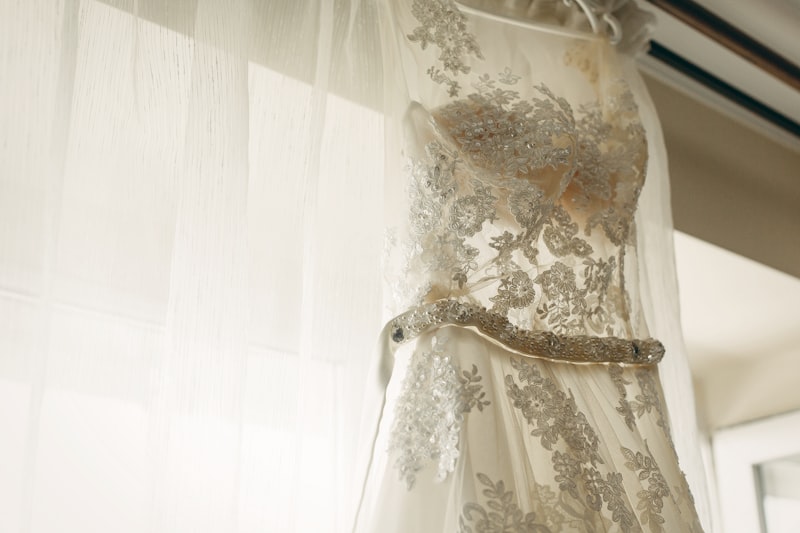Cultural Influences on Wedding Dress Styles: A Global Exploration
Cultural Influences on Wedding Dress Styles: A Global Exploration
Weddings are a beautiful celebration of love and commitment, and one of the most iconic elements of these ceremonies is the wedding dress. This article delves into the cultural influences on wedding dress styles around the globe, examining how traditions, historical contexts, and regional practices shape bridal fashion. Let’s explore the fascinating world of wedding attire!
The Historical Context of Wedding Dresses
The evolution of wedding dress styles can be traced back to various historical influences. The notion of a bride wearing a special dress dates back centuries, but the colors and styles have varied significantly based on cultural norms. For instance, in Western cultures, the white wedding dress became popular after Queen Victoria of England wore one in 1840. This marked a shift in bridal fashion, favoring white as a symbol of purity.
Regional Variations in Wedding Dress Styles
Each culture around the world has its own unique approach to wedding attire, reflecting local customs and traditions. Here are some notable examples:
| Country | Traditional Dress | Color Symbolism |
| China | Qipao (Cheongsam) | Red symbolizes good fortune |
| India | Sari or Lehenga | Colors like red and gold signify prosperity |
| Japan | Shiro-maku (white kimono) | White represents purity |
| Western Countries | White gown | White symbolizes purity; however, variations exist |
The table above outlines some traditional wedding dresses from different countries, emphasizing how color and attire reflect cultural beliefs and values.
1. Chinese Wedding Dresses
In China, the traditional wedding dress is known as the Qipao (or Cheongsam), which is often bright red. The color red is associated with happiness and good fortune. The dress is beautifully embroidered with gold and features intricate designs, symbolizing prosperity. Brides may also wear a phoenix crown to complement their dress, adding a regal touch to the ensemble.
2. Indian Bridal Attire
India boasts a rich tapestry of bridal fashion, with the Sari and Lehenga being the most commonly worn outfits. These garments are often deeply colored in shades of red, gold, and other vibrant tones, symbolizing auspiciousness and fertility. Different regions in India have their unique styles, such as Kanjeevaram in South India and Bandhani in Rajasthan, showcasing the diversity of Indian wedding attire.
3. Japanese Wedding Kimono
The traditional Japanese bridal outfit is called Shiro-maku, a pure white kimono that signifies a new beginning. It is often layered with vibrant colored kimonos and has beautiful ornamental details. After the ceremony, the bride may change into a red kimono, symbolizing happiness and good luck.
Modern Trends and Globalization
The world of bridal fashion is continually evolving, influenced by globalization, pop culture, and modern sensibilities. Many contemporary brides blend traditional elements with modern styles, resulting in unique hybrid designs. For instance, the emergence of  reflects a desire for comfortable yet beautiful attire, often adorned with lace and floral patterns.
reflects a desire for comfortable yet beautiful attire, often adorned with lace and floral patterns.
Moreover, social media platforms have significantly impacted wedding fashion. Couples often turn to platforms like Instagram and Pinterest for inspiration, inadvertently leading to the proliferation of certain styles across cultures. This blending of influences presents a fascinating dynamic in how wedding dress styles are perceived and chosen today.
Celebrity Influences on Bridal Fashion
Celebrity weddings often set trends that resonate deeply within bridal fashion. Iconic figures such as Kate Middleton and Meghan Markle have influenced the choice of wedding dresses worldwide. Kate’s Alexander McQueen gown featured a romantic aesthetic reminiscent of traditional styles yet embraced modern elegance. Conversely, Meghan’s simple and chic dress by Clare Waight Keller highlighted minimalism while honoring the timeless essence of a wedding gown.
| Celebrity | Designer | Style Influence |
| Kate Middleton | Alexander McQueen | Romantic and Traditional |
| Meghan Markle | Clare Waight Keller | Minimalistic and Elegant |
| Rihanna | Giambattista Valli | Creative and Bold |
| Beyoncé | Galia Lahav | Glamorous and Daring |
Conclusion: Embracing Cultural Diversity in Wedding Dresses
As we've explored, cultural influences on wedding dress styles highlight the significance of tradition, color symbolism, and modern trends in bridal attire. Each wedding dress tells a story of cultural heritage, personal values, and the evolving nature of love and partnerships. For brides-to-be, understanding these influences can greatly enhance their wedding planning journey. It’s essential to appreciate and respect the cultural significance behind wedding attire, whether opting for a traditional dress or incorporating modern influences with cultural elements. We encourage brides to celebrate their unique backgrounds and draw inspiration from various traditions to craft a style that reflects their identity.
In choosing your wedding dress, consider researching cultural elements and styles that resonate with you and your partner's roots. This not only personalizes your wedding experience but also pays homage to the cultural narratives that shape our lives.
